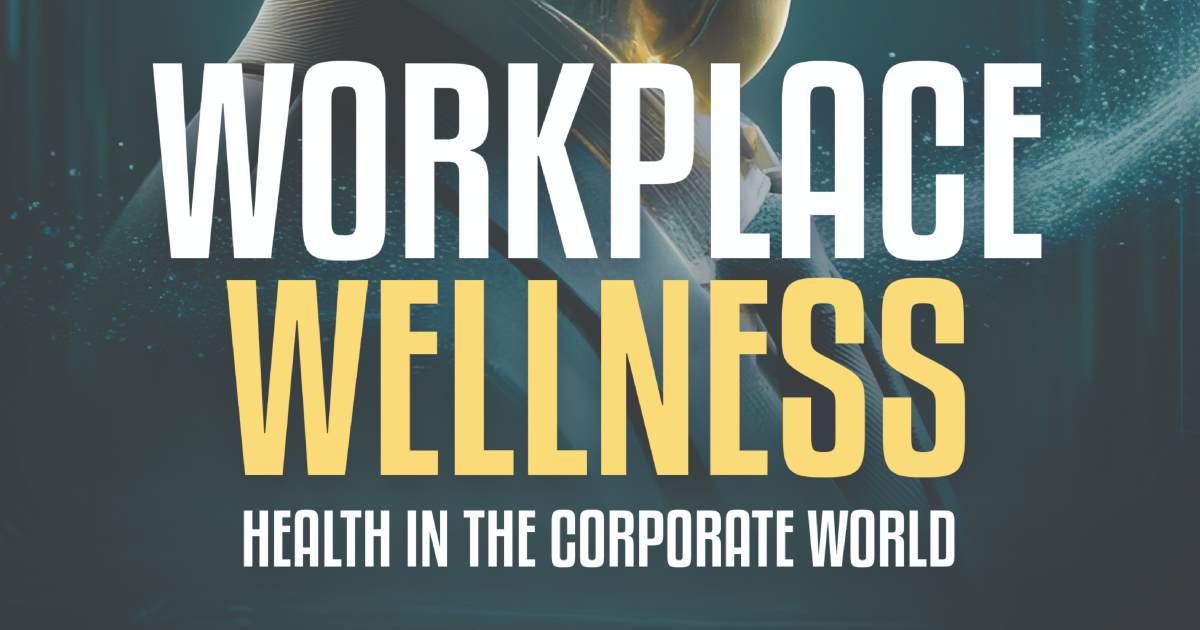Wellness perks like gym memberships and mental health days sound great, but are they solving the root problems or just ticking boxes? Flashy initiatives meet unspoken workplace pressures, this article explores it all.
Workplace wellness is one of those buzzwords that sound great in theory, but do we actually put it in practice? It feels like companies are starting to realise, when employees are physically and mentally healthy, they contribute towards better productivity and even improve the bottom line. However, there’s another side to the story, one that’s equally important. For all the wellness initiatives out there lies the reality of corporate life, where pressures can easily slip into toxicity and burnout that raises the question, “Are we focusing on the right issues?” We need to look at both the glamorous side and the less glamorous aspects of it.
Why Workplace Wellness Matters
The whole idea behind workplace wellness seems simple: happy and healthy employees will perform better. In a work environment filled with deadlines, long hours, and high expectations, wellness programs feel like a way for companies to say, “We care about your wellbeing.” Whether it’s a gym membership, mental health days, or seminars, these programs are there to help employees beyond just their daily tasks.
But I think there’s a deeper reason wellness is gaining more attention. In today’s competitive job market, many employees are now actively look for companies who genuinely care about their health. Knowing that a company values you beyond just productivity is an important factor. Still, it’s hard to shake the thought that these efforts only scratch the surface.
The Rising Trend of Wellness in Pakistan
Workplace wellness is catching the spotlight in the country. Pakistan’s leading conglomerate company and a well-known Pakistani mobile network company are leading the way. For instance, the conglomerate company has started initiatives like health screenings, fitness challenges, and nutrition awareness sessions to help employees focus on their physical health.
On the other hand, the network company has rolled out an Employee Assistance Program (EAP) that offers confidential counselling, mental health support, and even financial planning resources. It’s interesting because their approach acknowledges that wellness isn’t just physical health but they’re addressing mental health and personal challenges too. These companies appear to understand that wellness has to go beyond just offering a few perks and workplace stress isn’t just at work, it impacts our daily lives. But even with these programs, I wonder are they actually tackling the root causes of stress or simply offering a temporary fix?
The Other Side: Corporate Toxicity and Its Impact on Wellness
For every positive story about wellness initiatives, there are countless tales of stress, long hours, and burnout. It feels like companies sometimes introduce wellness programs as a quick fix for their culture. Many employees still struggle with unrealistic expectations and overwhelming workloads with tight deadlines, and lack of resources.
Wellness perks look appealing on paper, but they often don’t get to the heart of what employees actually need. Let’s face it. Sometimes what really matters gets missed in the search of “wellness.” One major aspect we rarely discuss about is annual leave. Forget mental health days, are employees even taking their annual leave? It’s as if there’s this unspoken message that you need to perform at a high level to justify taking a mental health day. In situations like this, the wellness program becomes more of a band-aid than a real solution.
Do We Ever Really Take a Break?
Even machines get time off for maintenance, but what about humans? Even a Sunday sounds refreshing. But how many employees actually take their full annual leave without feeling like they’re falling behind? The corporate “hustle culture” subtly pressures people to stay alert 24/7 making actual rest feel like a guilty pleasure rather than a right. Are companies actually asking why people aren’t taking their days off? For some, it’s not even about the workload, it could be that travelling is out of reach or maybe home life isn’t exactly restful either. Without addressing these realities, companies risk encouraging employees to become productivity machines, trapped in a loop with no real escape.
The “Look Busy, Feel Better”
We’ve all seen it, a new wellness initiative rolls out with an upbeat email announcement, but a few weeks in and employees feel just as stressed as before. When people feel they have to “earn” their right to wellbeing, wellness perks start feeling more like an additional responsibility rather than a relief. It’s as if companies are saying, “Take care of yourself… as long as you’re consistently hitting those numbers.”
Annual Leaves – But at What Cost?
Companies should pay more attention to the real reasons people are hesitant to take time off. For some, annual leaves may be their only chance to recharge, but if the work piles up in their absence, that break becomes a double-edged sword. Plus, there are those who may have personal challenges, like a toxic home environment, that makes time off feel more draining than staying at work. Should companies care about what happens to employees outside the office?
Wellness Shouldn’t Be a Checklist
Workplace wellness has the potential to be transformative, but only if companies are willing to go beyond surface-level solutions. It’s not enough to add a gym or offer yoga classes, companies need to think about the environment they’re creating. Are they setting realistic expectations? Do companies ever put their mind to such matters or are they just encouraging us to become humanoids?
Here’s a thought! Instead of treating wellness as a box to check, what if companies actually reimagined their cultures to support human wellbeing? That means not just offering programs but genuinely encouraging employees to use them without the feeling pressure to “earn” it. It’s about prioritising employee wellbeing in a way that isn’t just based on performance but as a helping hand to increase your performance and capability to achieve the goals.
What Does A Real Workplace Wellness Look Like?
What does real and effective workplace wellness look like? Genuine workplace wellness is more than perks or programs. It’s a combination of accessible wellness resources, an open culture that supports mental health, along with other things. It’s about building an environment where employees feel comfortable asking for help, taking breaks, and setting boundaries. There’s no point in offering countless wellness programs that doesn’t get to the root of what employees need.
A New Way Forward
In Pakistan, where the workplace culture is still evolving, the growing focus on wellness is a positive step. But I strongly feel that we can’t just celebrate these initiatives without questioning if they’re truly making an impact. That means rethinking the way success is being measured at work and maybe even acknowledging that, yes, employees are human beings with lives and challenges outside the office.
The true measure of workplace wellness lies not in the number of programs offered, but in the environment those programmes create. This means creating a space where they feel comfortable taking care of their mental and physical health without fear or guilt. Only then, I think that workplace wellness will become a reality rather than a buzzword that will shift towards a healthier, more productive, and a fulfilling workplace.










